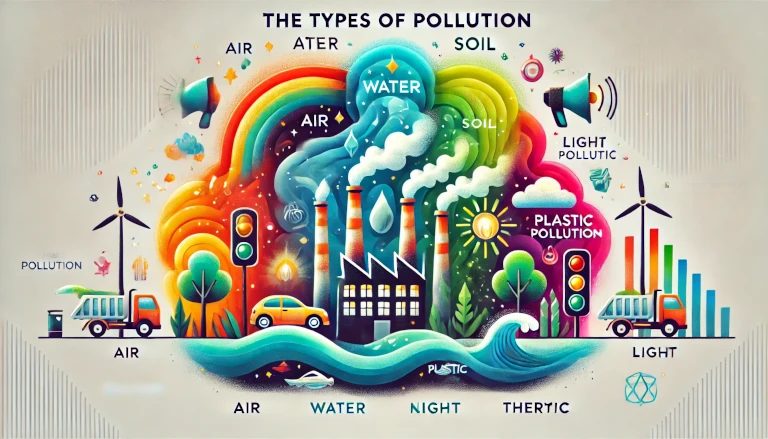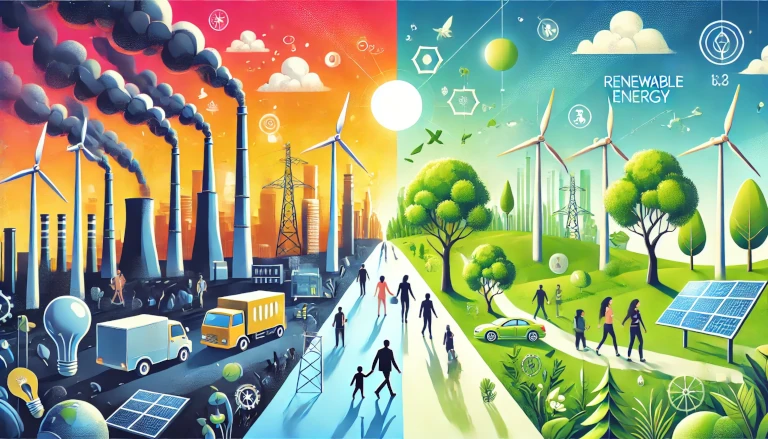River pollution is one of the most serious environmental challenges we face today. It occurs when harmful substances such as chemicals, waste, and toxic materials enter rivers, degrading the water quality and harming the surrounding ecosystems. In this blog post, we’ll explore the causes, effects, and practical solutions to reduce river pollution, using simple language to make it easy for everyone to understand.
What is River Pollution? 🌊🚱
River pollution happens when contaminants like industrial waste, household garbage, chemicals, and sewage enter rivers, making the water unsafe for drinking, agriculture, and wildlife. This pollution affects the entire ecosystem, harming fish, animals, and plants that depend on clean water to survive.
For example, many rivers near urban areas become heavily polluted due to untreated sewage and factory waste being dumped directly into the water, causing severe environmental and health problems.
Major Causes of River Pollution 🚯🏭
There are several human activities that contribute to the pollution of rivers. Some of the most common causes include:
1. Industrial Waste 🏭⚠️
Factories and industries often discharge toxic chemicals, heavy metals, and other hazardous substances into rivers without proper treatment. These pollutants can poison aquatic life and make the water unsafe for human use.
2. Sewage and Wastewater 🚽💧
Untreated or poorly treated sewage from households and commercial buildings is one of the leading causes of river pollution. In many developing countries, sewage is often dumped directly into rivers, contaminating the water with harmful bacteria and viruses.
3. Agricultural Runoff 🚜🌾
Fertilizers, pesticides, and herbicides used in farming can wash off fields during rainstorms and end up in rivers. This agricultural runoff introduces harmful chemicals into the water, which can lead to the death of fish and other aquatic organisms.
4. Plastic and Solid Waste 🗑️🌍
Plastic waste, such as bottles, bags, and other packaging materials, often ends up in rivers. This plastic not only pollutes the water but can also choke and kill aquatic animals that mistake it for food.
5. Oil Spills 🛢️
Oil spills from ships, boats, or industrial sites can have a devastating impact on rivers. Even a small amount of oil can create a thick layer on the water’s surface, preventing oxygen from reaching aquatic life.
Effects of River Pollution on Health and the Environment 🏞️🏥
River pollution has widespread effects on both human health and the environment. Some of the key effects include:
1. Health Hazards 🏥
Polluted river water can carry harmful bacteria and viruses that cause diseases such as cholera, typhoid, and dysentery. When people use contaminated water for drinking, cooking, or bathing, they are at risk of contracting these illnesses.
2. Loss of Aquatic Life 🐟
Toxic chemicals and pollutants in rivers kill fish, plants, and other aquatic organisms. This disrupts the entire aquatic ecosystem, as polluted rivers cannot support a healthy population of wildlife.
3. Impact on Agriculture 🌾
Farmers rely on river water for irrigation, but if the water is polluted, it can contaminate crops and reduce soil quality. This makes farming more difficult and can lead to food shortages in areas that depend on clean water for agriculture.
4. Damage to Tourism and Recreation 🌍🏖️
Rivers that are polluted become unattractive for tourism, fishing, and recreational activities. People are less likely to visit areas where the water is visibly dirty or smells bad, resulting in economic losses for local communities.
Solutions to Reduce River Pollution 🌱✅
While river pollution is a major problem, there are several practical solutions that can help clean and protect our rivers. Some of these include:
1. Proper Wastewater Treatment 🚰
Governments and industries need to invest in wastewater treatment plants to ensure that harmful chemicals and sewage are properly treated before being released into rivers. This will help reduce the number of pollutants entering waterways.
2. Promoting Organic Farming 🌾
Encouraging farmers to use organic fertilizers and reduce the use of harmful chemicals can greatly decrease the amount of agricultural runoff that ends up in rivers. Sustainable farming practices can protect both the soil and water from contamination.
3. Reduce Plastic Use ♻️
Minimizing the use of single-use plastics and improving recycling efforts can prevent plastic waste from reaching rivers. Organizing river clean-up drives can also help remove existing plastic and other waste from rivers.
4. Strict Environmental Regulations 🏛️
Governments should enforce strict regulations on industries and agricultural practices to prevent the dumping of toxic substances into rivers. Penalties for illegal dumping and promoting the use of eco-friendly technologies can go a long way in reducing pollution.
5. Public Awareness Campaigns 📢
Educating people about the importance of clean rivers and the dangers of pollution is crucial. Public awareness campaigns can encourage individuals to reduce their waste, avoid littering, and participate in community efforts to protect rivers.
Real-World Example: Cleaning the Ganges River in India 🏞️🌍
One of the most famous examples of river pollution and cleanup efforts is the Ganges River in India. The Ganges is one of the most polluted rivers in the world due to industrial waste, sewage, and religious practices. However, the Indian government launched the Namami Gange project, aimed at cleaning the river and restoring its health. This project includes building sewage treatment plants, preventing industrial pollution, and spreading public awareness about river conservation.
Taking Action to Protect Our Rivers 🌊🌿
River pollution is a serious issue that affects both human health and the environment, but it’s a problem we can solve if we take the right steps. By focusing on solutions like wastewater treatment, reducing plastic waste, and promoting sustainable agriculture, we can make a significant impact in cleaning and preserving our rivers.
It’s important for everyone—governments, industries, and individuals—to work together to ensure that future generations have access to clean, safe rivers.
Discover more from Green Ecosystem - Renewable Energy, Agriculture, and Environmental Sustainability
Subscribe to get the latest posts sent to your email.


